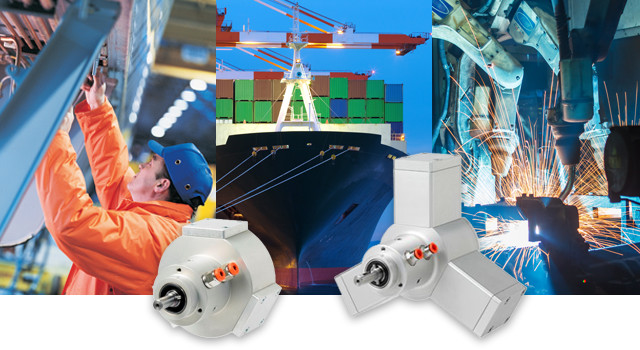
 Electric motors—the choice is phenomenal. At the heavyweight end of the scale they drive ships. And quite unbelievably one of the smallest electric motors ever produced operates by shuttling atoms between two metal droplets, one large and other small, residing on the back of a carbon nanotube through which an electric current is transmitted.
Electric motors—the choice is phenomenal. At the heavyweight end of the scale they drive ships. And quite unbelievably one of the smallest electric motors ever produced operates by shuttling atoms between two metal droplets, one large and other small, residing on the back of a carbon nanotube through which an electric current is transmitted.
AC/DC, brush and brushless, servo and stepper; the list goes on. And then there's how they are powered—from the mains, the sun, battery, clockwork or via generator. With all these options one could easily ask: "why do we need any other type of motor?" But, there is a motor that has found its niche and continues to grow in popularity. It's the air motor.
For applications such as paint-stirring the air motor has become an industry standard and when you consider its credentials it's easy to understand why. Other markets also understand the benefits of air motors, so under what circumstances would you choose air over electric?
The first and obvious answer is when other power sources are not suitable for the application. Hazardous areas are clearly prime sites for air motors as there is no danger of sparks. Of course there are ATEX-rated electric motors available to meet this need but the shielding required makes them expensive.
The benefits of air motors certainly become apparent where harsh duty cycles are involved. Hold a powered AC or DC motor shaft with a brake and it will soon burn out. An air motor, on the other hand will just stop, and then continue when the brake is released. There is no component to damage, it just stops and starts again with no ill effect.
Stepper motors are of course ideal for stop/start applications under load but not in the hazardous or sensitive environments involved in hydrocarbon engineering, paint systems, paper converting, wood working and food processing. And these are the sectors that are increasingly turning to the air motor as a viable alternative to an electrical, variable speed drive.
 Air motors are also ideal where magnetic fields and electro-magnetic interference are design issues—in MRI scanners for example—for use underwater and in stealth applications where a stray signal could give away your position. However not all air motors provide the same performance and here again the specifier needs to consider the options.
Air motors are also ideal where magnetic fields and electro-magnetic interference are design issues—in MRI scanners for example—for use underwater and in stealth applications where a stray signal could give away your position. However not all air motors provide the same performance and here again the specifier needs to consider the options.
Some air motors don't have a good reputation for efficiency but this is a criticism that can only be levelled at vane type motors. In simple terms the vane air motor comprises a cylinder inside which is rotor with vanes that spins like a windmill. There clearly needs to be gap between the edge of vane and the casing to allow its free movement and it's this aspect that makes the vane motor very difficult to seal. As result a lot of air is wasted.
The unique free-floating piston in a Dynatork Air motor is much easier to seal. It is therefore far more cost efficient as most of the energy stored up in the compressed air is converted into motion. It consumes up to 80% less air than a vane motor providing significant cost savings even at maximum torque.
Aside from energy costs, the vane motor remains a good choice if the speed requirement is above 800 rpm and the application calls a steady duty cycle. However if the application involves fast acceleration, stop/start and reverse at lower speeds then a Dynatork piston motor is the answer. Its free-floating pistons transmit maximum torque on start-up that can be adjusted via a pressure regulator. Speed is adjusted to fine limits by restrictors on the exhaust port. Pulse counters can also be specified to programme direction of rotation, speed and number of revolutions.
So, for flexibility, reliability, and cost efficiency, the piston air motor proves its case.